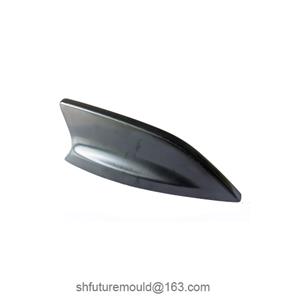Analysis of Sink Marks in Injection Molded Products
Sink marks are a common surface defect in injection-molded products. They typically appear as depressions or wavy marks on the surface. These defects can negatively impact both the appearance and functionality of the product.
Causes of Sink Marks
1. Volume Changes Due to Material Shrinkage
Plastic materials undergo volume shrinkage as they cool and solidify. This is particularly noticeable in thicker sections, where uneven cooling can lead to the formation of sink marks on the surface.
2. Improper Mold Design
Poor design of thickened areas or ribs can cause localized uneven cooling.
Incorrect positioning or sizing of gates can result in insufficient material filling the mold cavity.
3. Issues with Molding Process Parameters
Insufficient injection pressure or short holding time prevents the mold cavity from being filled.
Inadequate or uneven cooling causes thermal stress concentration, leading to sink marks.
Impact of Material Selection
Different plastics have varying shrinkage rates. Crystalline plastics (e.g., PP, POM) are more prone to sink marks compared to amorphous plastics (e.g., PC, PMMA).
Solutions to Sink Mark Problems
1. Improve Mold Design
Uniform Wall Thickness Design
Avoid areas with uneven wall thickness in the product design, especially around ribs and corners.
Optimize Gate and Runner Design
Ensure uniform material flow by adding multiple gates or improving the runner layout.
Enhance Cooling System
Properly arrange cooling channels to ensure consistent cooling across all areas of the mold.
2. Optimize Process Parameters
Increase Injection Pressure and Holding Time
Apply higher pressure and extend holding time to ensure complete filling and reduce shrinkage.
Extend Cooling Time
Allow sufficient time for the plastic to solidify fully before demolding, reducing internal stress.
Increase Mold Temperature Appropriately
Minimize cooling speed differences and improve uniformity in cooling.
3. Material Selection and Modification
Choose Low-Shrinkage Materials
Prefer amorphous materials or materials enhanced with glass fiber to reduce overall shrinkage.
Use Filler Modifications
Add mineral fillers or other reinforcements to improve dimensional stability.
4. Post-Processing Methods
Secondary Processing
Repair the surface through techniques such as sanding or painting to conceal sink marks.
Vacuum-Assisted Molding
Utilize vacuum technology during the injection molding process to reduce the likelihood of sink marks.
- Injection Mold
- Automotive Injection Mold
- Electronics & Electrical Injection Mold
- Consumer Goods Injection Mold
- Airplane Components Injection Mold
- Medical Components Injection Mold
- Irrigation Components Injection Mold
- Injection Molds




